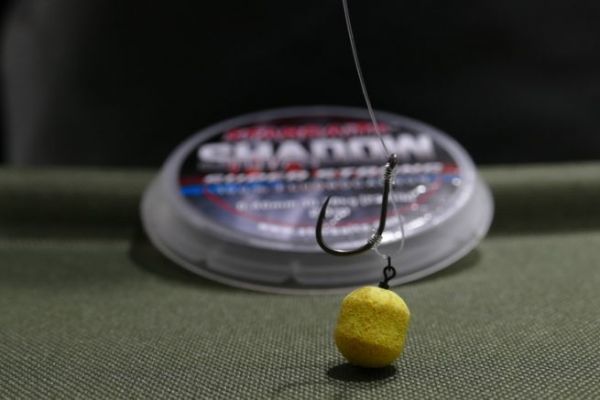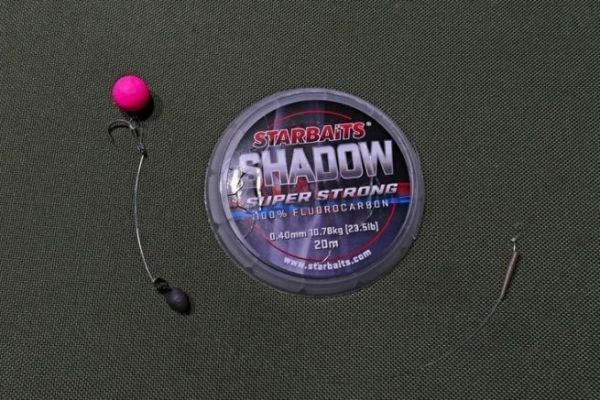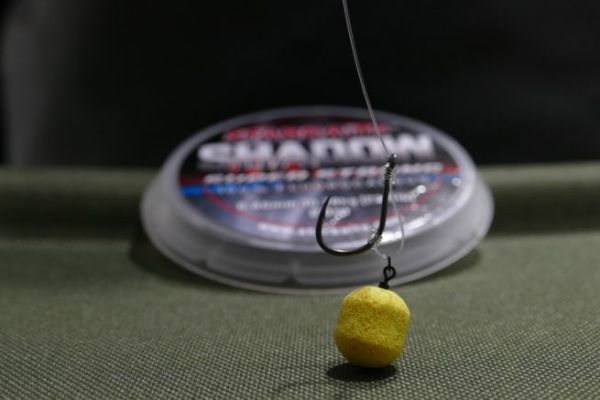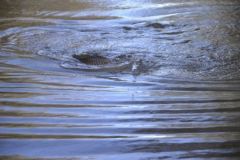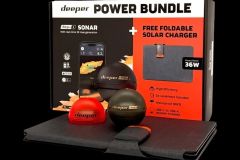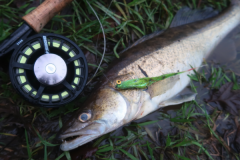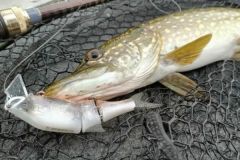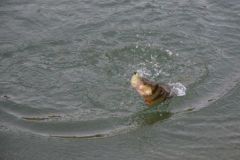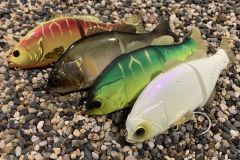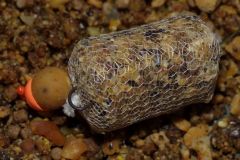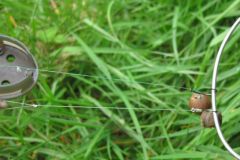The world of leaders is one in which many carp anglers find themselves lost. The effects of fashion undoubtedly influence the promotion of some more than others, and it is sometimes difficult for novices, but also for more experienced anglers, to find their way around. But there are some leaders that stand the test of time, thanks to their greater discretion and efficiency. The D-Rig is one of them.
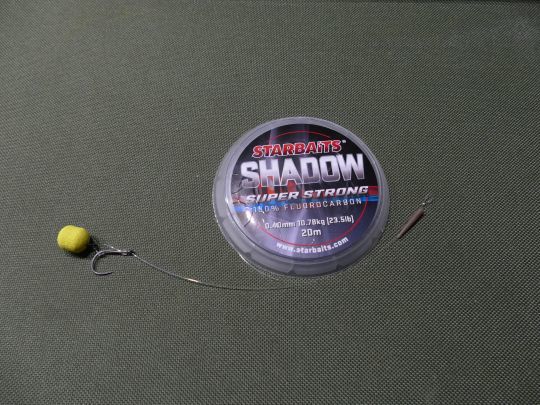
What is a D-Rig leader?
A D-Rig leader consists in presenting the bait on a loop along the shank of the hook. The bait remains free on this D-shaped loop thanks to a ring or micro-swivel that slides over it. Historically speaking, the D-Rig is made from a rigid fluorocarbon-type material, with a D-loop running the length of the hook shank.
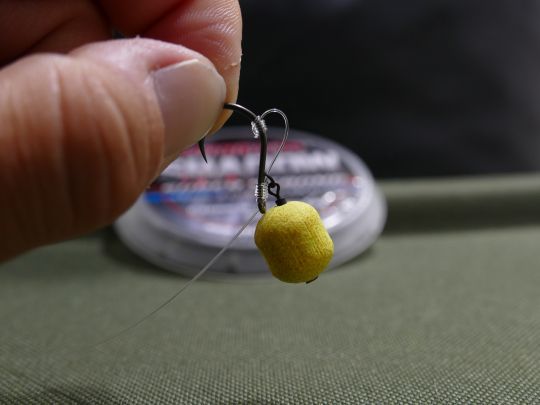
Use of a D-Rig leader
The first advantage of the D-Rig is complete bait mobility. As a result, the hook swings more effectively and the fish cannot "lean" on the bait to unhook during the fight. Another significant advantage is its rigidity. In its traditional form, we use fluorocarbon like Shadow to make it. As a result, it never tangles on the hardest casts and is much more resistant to tangles caused by undesirables such as crayfish or catfish. Last but not least, the use of Shadow makes it extremely discreet (the material is virtually invisible underwater).

The materials required
To be adapted according to conditions, of course.
- Shadow in diameter 40
- Number 6 Chod Power Hooks
- A micro ring swivel
- An anti-tangle sleeve
- A pair of scissors
- A lighter
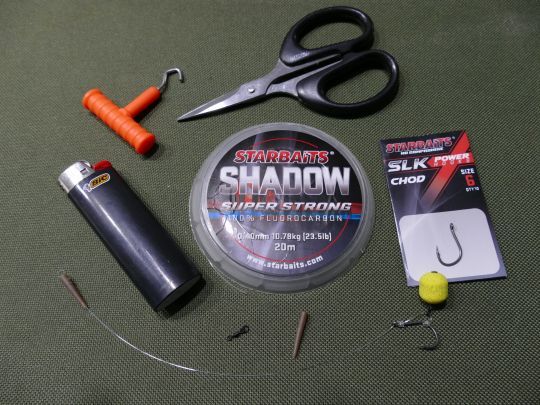
Production stages
1) Cut 30-40 cm of Shadow
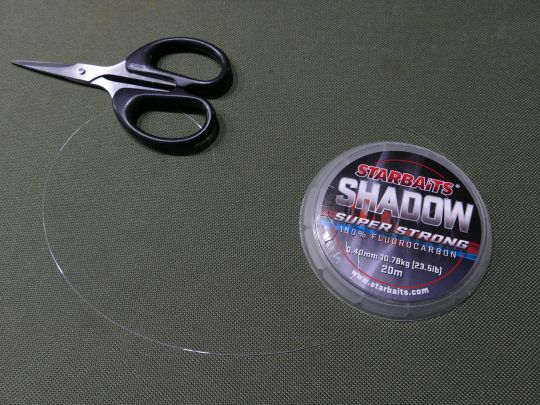
2) Tie the D-knot at the bottom of the hook shank, at the bend. To do this, simply cross the two strands and tie a knot without any knot, then pull hard (on both strands) for a good hold. Be careful to tie the knot so that the main strand is pulled towards the curve and not towards the eyelet. This knot must be held at the beginning of the hook's curve (starting from the eye).
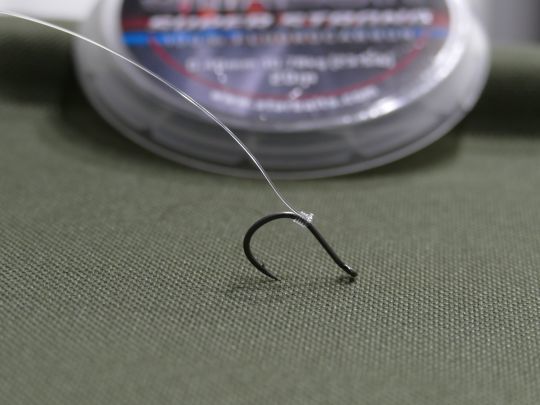
3) Now that the base of the D-Rig is complete, fit a micro ring swivel.
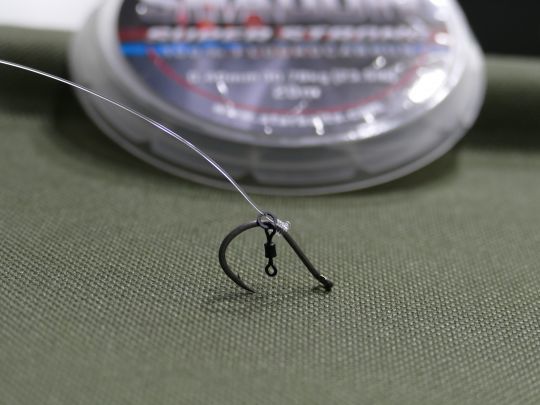
4) Pass the Shadow through the outside of the eyelet, starting to form the D.
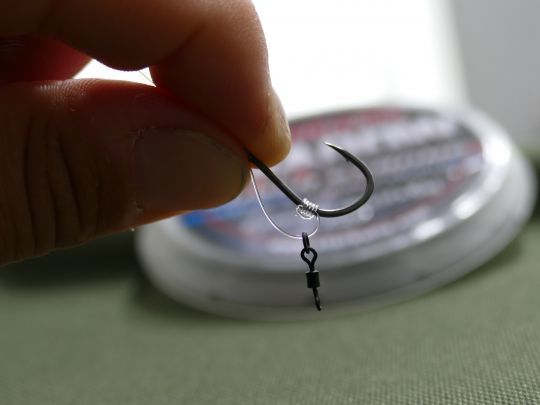
5) Tie a knot without any knot, making sure to go through the outside of the eyelet (while holding the loop).
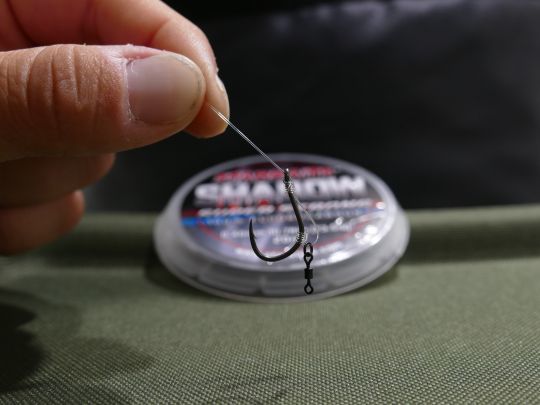
6) Put on an anti-tangle sleeve.
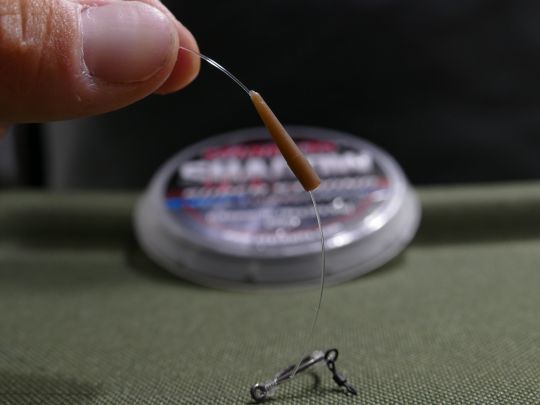
7) Make the terminal loop of the leader (a fluorocarbon trick for me) or you can make an 8-loop.

In its traditional form, this D-Rig leader is recommended for dense, balanced baits. Its main qualities are resistance to tangling, extreme bait mobility and discretion. In a future article, we'll look at some of the evolutions of this leader.
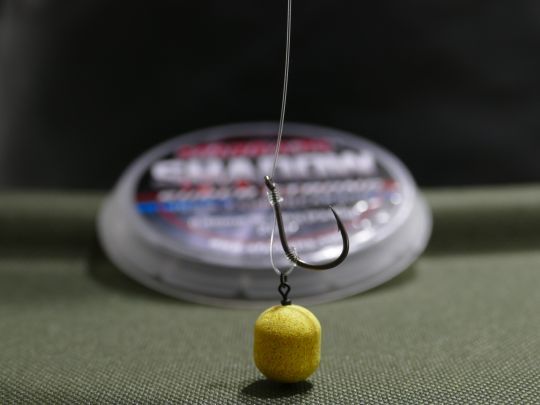

 /
/ 